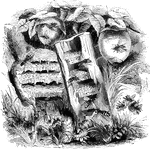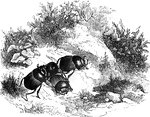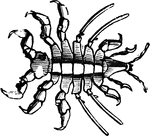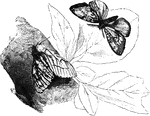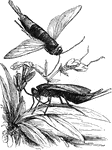
Sawfly
"On the continent of Europe the Sirex gigas often appears in immense numbers, and does great…

Electric scolopendra
"The Electric Scolopendra, S. electrica, is a European species, luminous in the dark." —…
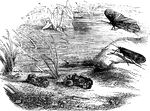
Great Red Sedge and Larva
"The Phrygania striata is over an inch long, of a fawn-color, with the exception of the eyes,…

Shrimp
"They are distinguished by the possession of a large oval or triangular appendage which covers the base…

Silkworm Moth, Caterpillar, and Chrysalis
"This important insect is a native of the north of China; and a great portion of the supplies of silk…
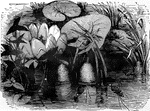
Spider, diving
"Another remarkable member of the Araneidae is the Diving Spider, Argyroneta aquatica, which…
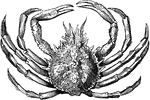
Spinous spider-crab
"In these the back is usually covered with spines and hairs. They generally live in deep water, and…
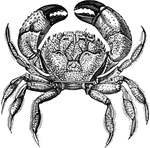
Eriphia spinifrons
"The Eriphea spinifrons, for instance, distributed in nearly all seas, has the front covered…
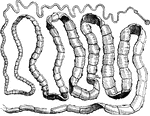
Tape-worm
"The body is composed of numerous joints or segments, each one resembling the others; these are often…

Walking Leaf
"The Phasmina includes some curious insects, one species of which is the Walking-leaf, Phyllium…

Water Scorpion
"The Nepa cinerea is a European example of this family, which may be met with there in every…
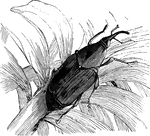
Palm Weevil
"Found in South Ameica, is a very large species, nearly two inches long; it is black, and lives on the…

Wood-louse
"The family Oniscidae, including the well-known Wood-Louse, Oniscus murarius, and many similar…

